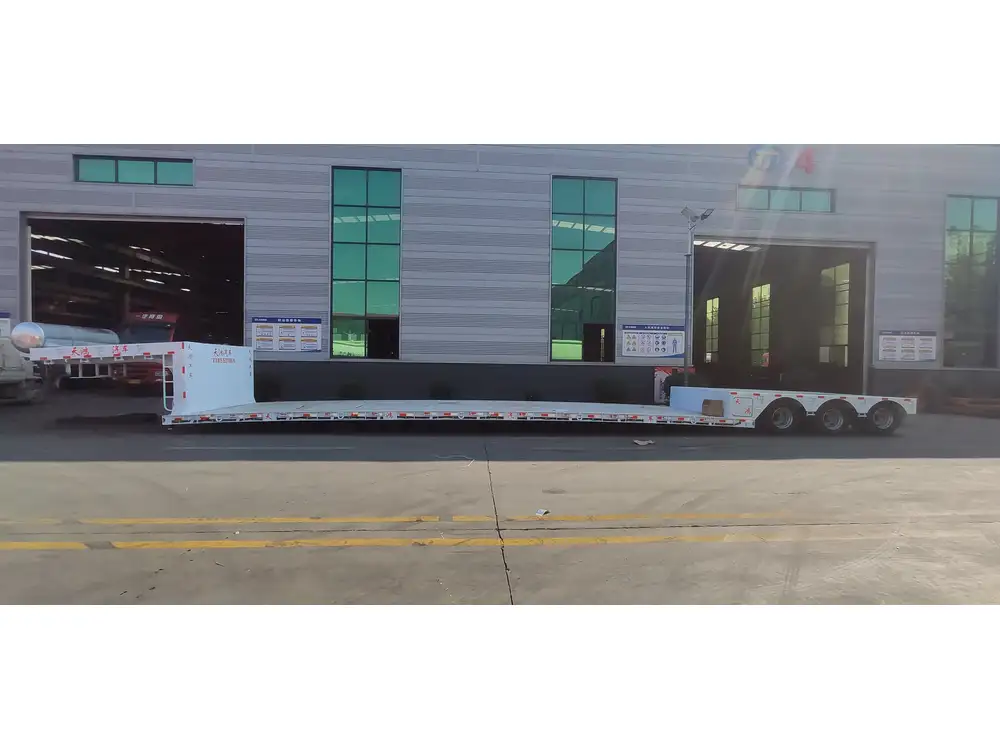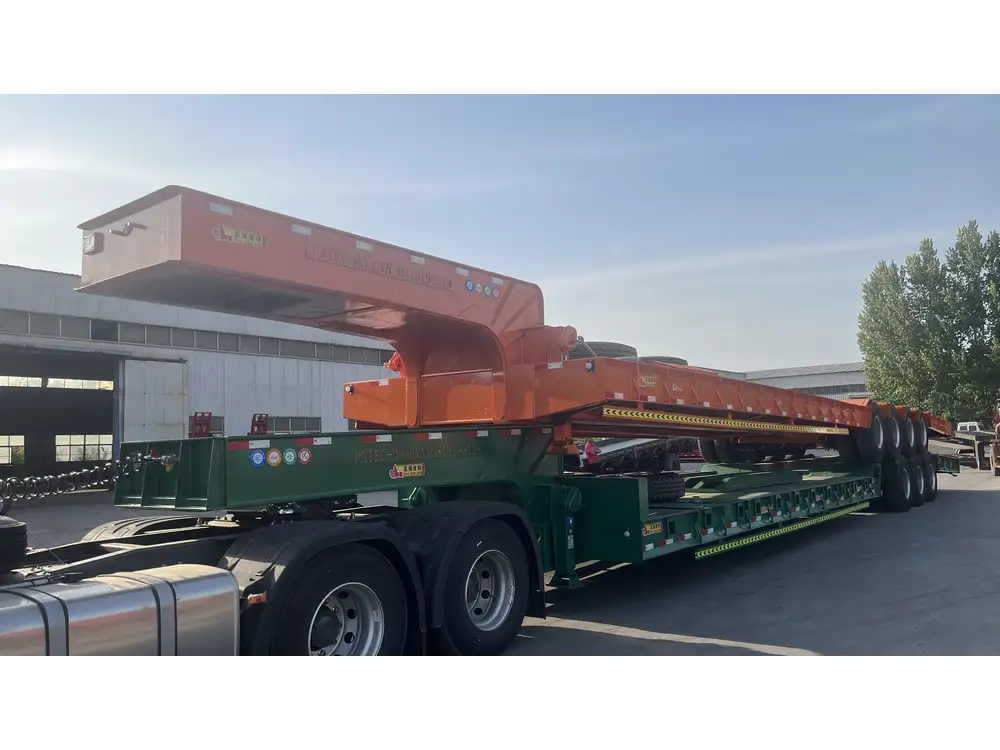When it comes to maximizing the efficiency and performance of a nine-foot dump trailer, understanding the optimal hinge placement is critical. This not only affects the operational usability of the trailer but also enhances its longevity and safety. In this comprehensive guide, we will explore the intricacies of hinge placement, various factors to consider, and provide practical insights that cater to both novice and experienced trailer manufacturers and users.
Understanding Hinge Mechanics
The Role of Hinge Placement
The hinge is a pivotal component of any dump trailer, directly linked to its tilting function. Correct hinge placement ensures that the load is distributed evenly throughout the tilting process, thereby preventing undue stress on the trailer frame and enhancing stability.

Torque and Leverage Considerations
When a load is lifted, the position of the hinge dictates the leverage exerted on the trailer. Incorrect placement can result in excessive torque, leading to potential structural integrity issues. Understanding the dynamics of torque and load distribution is essential in determining where to position hinges effectively.
Key Factors Influencing Hinge Placement
Load Distribution
Here’s a snapshot of how load dynamics play into hinge positioning:
| Load Position | Impact on Hinge Placement | Effect on Stability |
|---|---|---|
| Centered | Balanced torque | High stability |
| Rearward | Increased forward torque | Risk of tipping |
| Forward | Increased rearward torque | Decreased stability |
Balancing the load is crucial; it should ideally remain centered to maintain balance during operation. Hinge placement should facilitate this combined with load management strategies.

Frame Design and Material Strength
Different trailer frames utilize various materials that have distinct strength characteristics.
- Steel: Offers high tensile strength and resistance to wear but is heavier.
- Aluminum: Lightweight yet strong, but may deform under excessive loads without proper hinge placement.
- Composite Materials: Provide a balance between weight and strength but require precise engineering considerations.
Type of Trailer and Intended Use
Different types of dump trailers include:
- Standard utility trailers: For landscaping and residential use.
- Heavy-duty construction trailers: For transporting heavy machinery and materials.
Usage Considerations
Clearly define the intended use of your nine-foot dump trailer:
- Frequent loading and unloading
- Heavy vs. light material transport
- Terrain considerations (i.e., off-road or urban settings)

Recommended Hinge Locations for a Nine-Foot Dump Trailer
Standard Placement
For most nine-foot dump trailers, the conventional placement of hinges is approximately 6-12 inches from the rear end of the trailer. This location is advantageous as it strikes a balance between torque efficiency and stability.
Advantages of Standard Placement
- Balanced Load during Dumping: Minimizes the risk of tipping.
- Enhanced Structural Integrity: Reduces stress on the trailer’s frame.
- Optimized Dumping Angle: Facilitates effective material unloading.

Adjustments for Load Types
Light Loads
For trailers primarily used for lighter materials such as mulch or gravel, consider placing hinges closer to the rear, around 6 inches from the end. This allows for easier dumping while maintaining control.
Heavy Loads
Conversely, when hauling heavier materials such as sand or gravel, a further back hinge position (up to 12 inches) is advisable. This modification offers better weight distribution and reduces the likelihood of potential frame distortion.

Potential Modification Scenarios
Utilizing Compartmentalization
For a trailer intended for diverse material types, consider multiple hinge locations. Employ a modular hinge system that allows users to adjust based on load type.Add Assistance Mechanisms
For heavier loads, integrating hydraulic assistance can alleviate the strain on the hinge, improving its functionality and longevity across multiple use cases.
Practical Installation Tips
Tools and Materials Required
Before commencing with hinges installation, gather the following:
- Hinges (Choose industrial-grade for longevity)
- Wrenches and Ratchets
- Welding Equipment (For those opting for welded hinges)
- Measuring Tape
- Protective Gear (Gloves, goggles, etc.)

Step-by-Step Installation Guide
1. Preparation:
- Ensure your trailer is on a level surface to facilitate accurate measurements.
2. Marking the Hinge Locations:
- Decide on your hinge placement based on the aforementioned recommendations.
- Mark hinge positions using a measuring tape.
3. Drilling:
- Drill holes based on your hinge size. Ensure you are using the correct drill bit for the trailer material type to maintain structural integrity.
4. Securing the Hinge:
- Align the hinge, ensuring it sits flush against the trailer frame.
- Utilize bolts and washers for a secure fit, or weld for enhanced durability.
5. Testing:
- After installation, test the hinge by performing a dry run with the trailer empty to check for stability and secure movement.
Maintenance Tips for Longevity
Maintaining the hinge mechanism in a nine-foot dump trailer is equally as crucial as its correct placement. Here are effective strategies for prolonging the lifespan of your hinges:
Regular Inspection
- Visual Checks: Regularly inspect hinges for signs of wear, rust, or deformation.
- Functional Testing: Test the tilting mechanism to ensure it operates smoothly without excessive force.

Lubrication
Applying grease to the hinges can prevent wear and tear, facilitating smooth operations.
Replacement Procedures
Over time, wear is inevitable. When replacing, consider upgrading to more durable materials to ace future operations.
Conclusion
The placement of hinges on a nine-foot dump trailer is not merely a matter of preference but a decision that significantly impacts the operational effectiveness and safety. By carefully considering factors such as load distribution, frame material, trailer type, and intended use, users can optimize hinge placement for superior performance.
Should these considerations be properly adhered to, users not only prolong the life of their trailers but guarantee enhanced performance whether in construction, landscaping, or waste management.
In a world where efficiency and safety intertwine, mastering the art of hinge placement is essential for anyone looking to maximize their versatility in the realm of dump trailers. Whether you’re operating a small landscaping trailer or a larger construction-focused model, implementing these insights will yield dividends in performance and durability far into the future.



